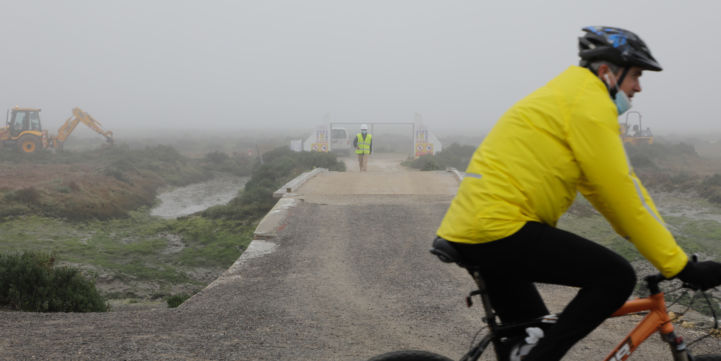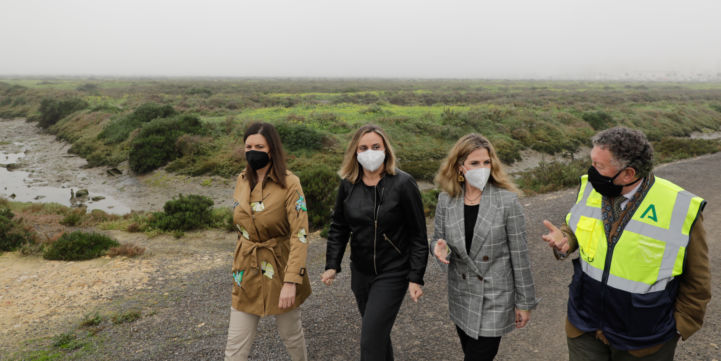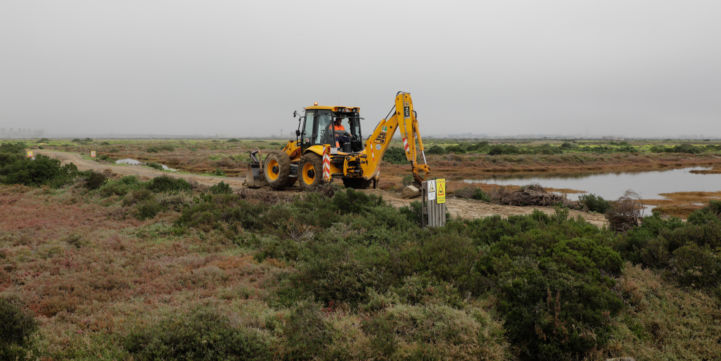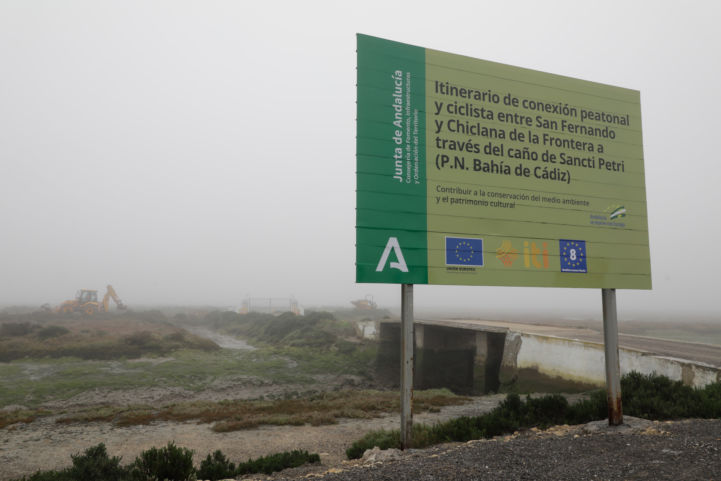Cycling through the Bay of Cadiz Natural Park will soon be possible on EuroVelo 8

This new segment of EuroVelo 8 – Mediterranean Route will be inaugurated in the summer of 2022, as announced by the Counselor for Development, Infrastructure and Land Management of the Andalusian Regional Government, Marifrán Carazo. In a visit made last month to the construction site, she indicated that these works "are carried out with the utmost environmental caution given the enclave in which they are happening, so although the implementation period is of 16 months, the construction works will be interrupted between April and July 2021 to respect the birds’ breeding period, which will make the construction last until the summer of 2022".
2.6 million Euro is being invested into the implementation of the cycle path between the cities of San Fernando and Chiclana. This stretch is part of the EuroVelo 8 cycling route, which runs from east to west along the entire Mediterranean region and passes through eleven European countries. For its implementation, the Autonomous Administration of Andalusia signed a collaboration agreement with the municipalities of San Fernando and Chiclana de la Frontera last July, to make the land available and for the subsequent maintenance of the route.
This section of EuroVelo 8 has a high cultural and environmental value. It runs entirely within the tidal ecosystem of the Bay of Cádiz, the works will not only allow the enhancement of this important natural space, but also of significant historical sites related to the Spanish War of Independence.

Cycle tourism and sustainable travel to discover Natural and Historical Heritage
The ecosystem of tidal canals in the Bay of Cadiz is the area with the highest concentration of salt flats in Andalusia. The itinerary runs through special conservation areas of Cadiz's Bay, included within the European Ecological Network, and the SCI (Site of Community Importance) Iro River area. The territorial scope of the project belongs to the Natura 2000 Network, and therefore, it fulfills an essential function as ecological corridors of the tidal ecosystem, favoring the good ecological status of unique habitats, especially fish and birds, in addition to the native flora of the floodplain.
In addition, the pedestrian and cyclist connection itinerary will value the historical legacy of several important locations of the Courts and the Constitution of 1812 in San Fernando, Cádiz. As well as the defensive buildings from the time of the War of Independence, including several protected monuments. In this way, the project will make it possible to identify the historical sites of seven defense batteries as well as the remains of the old Battery of Costa de San Pedro that will be allocated as a rest area.
A tale of two cities
The cycling and walking path will connect the towns of San Fernando and Chiclana through the “Caño de Sancti Petri”, in the Natural Park of the Bay of Cadiz. The trail will start at the Vaera bridge in San Fernando and end at the Fair of Chiclana. It will contribute significantly to improving mobility in the area and become a sustainable and environmentally friendly transport option. At the same time, it will promote active tourism, making this area of Cadiz more attractive and thus contributing to its growth.

The construction works, which will be carried out by Tragsa, includes intervention on existing roads and the conditioning of the areas outside the saltworks. Furthermore, four raised paths will be built to preserve the crossings over the riverbeds. The longest raised path will be the one that crosses the ‘Caño de Sancti Petri’, at 199 meters.
Contributions from the local municipalities have been important for the implementation of this cycling itinerary. They have also obtained the concessions and authorisations of the Land Maritime Public Domain and will be responsible for this public space going forward. For its part, the Ministry of Development, Infrastructure and Land Management, through the General Directorate of Land Management and Urban Planning of the Andalusian Regional Government will invest 2.6 million euros co-financed with Feder Funds within the Integrated Territorial Investment (ITI) 2014-2020. In addition, there has been the close collaboration of the Governing Board of the Natural Park and the contributions of the ‘salineros’ (salt makers) who carry out their activity in the environment.

EuroVelo 8 - Mediterranean Route
Cycling from Cadiz, in the south of Spain to the Turkish province of Izmir and on to the island of Cyprus is possible following EuroVelo 8 - Mediterranean Route! Its key attraction is the continuous presence of the Mediterranean and its unique culture along the way.
The EuroVelo team, together with partner countries, have recently established a Long-Term Management Agreement following the end of the Interreg Mediterranean Area MEDCYCLETOUR Project, in order to keep developing this amazing cycling route and to further build on the project’s results. Among the goals of this Long-Term Management Agreement are the implementation of safer infrastructure and the delivery of more information and services for cyclists.
Sustainable tourism and environmental conservation are key to the development of the EuroVelo network. Cadiz’s project allows people to access nature with a minimal impact to the environment, at the same time it promotes cycling as a sustainable means of transportation generating positive ripples in the territory. These types of developments show that Andalusia is leading the way in developing cycling routes in environmentally sensitive areas.
Author: Marta Orihuel